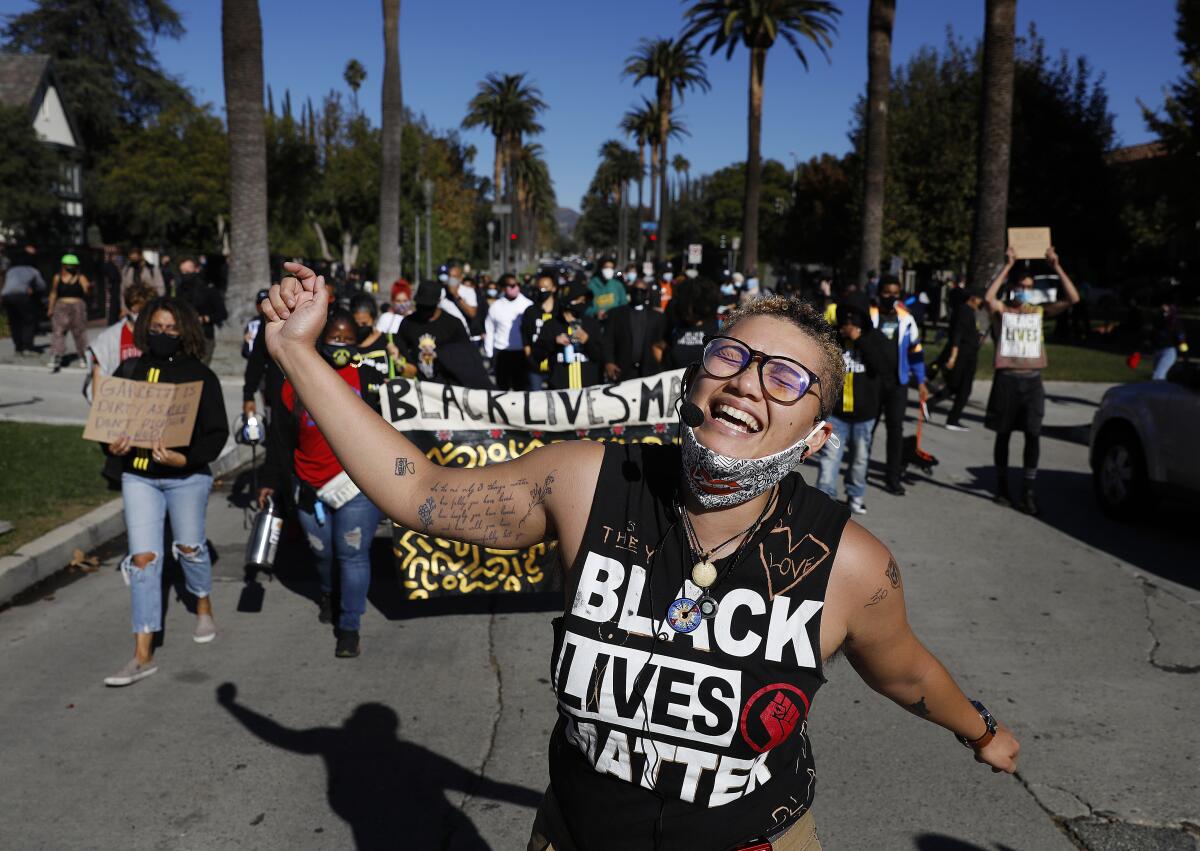No need to toughen L.A. restrictions on protesters

- Share via
There’s no acceptable reason for the L.A. City Council to triple the size of the current no-protest zone around an official’s home so that the closest anyone could come, in order to carry a sign, articulate opposition to a policy or otherwise express themselves, is about the length of a football field.
That’s what the council is demanding — a 100-yard buffer, which as a practical matter means no one would be able to protest in front of a house or even across the street or down the block. The closest anyone could come would be hundreds of feet away, meaning around the corner or on the next block over. So in effect it would be a ban on any expression that officials could see or hear from inside their homes or on their front stoops.
Council members don’t like to hear from constituents at home, and who can blame them? People want to be able to leave their work at the office. But working in public service, especially as an elected officeholder with power to make and enforce laws that affect people’s lives, necessarily involves trade-offs. That can include sometimes taking work home with them, and that could mean hearing people exercise their constitutionally protected right to speak and to express their grievances.
Councilmember Nithya Raman, to her credit, voted “no,” arguing at Tuesday’s council meeting in favor of enforcing the existing ordinance.
The current city ordinance already imposes a 100-foot (as opposed to a 100-yard) buffer, so it already protects a substantial perimeter around a house. Protesters can knock on the door during normal daylight hours, but they otherwise can’t come onto private property uninvited. They can’t vandalize the official’s car, they can’t block sidewalks or streets without a permit, they can’t demonstrate in predawn or late-night hours, and they can’t threaten injury to the official (or their children or anyone else). All those things are infractions, misdemeanors or, in the case of particularly serious threats, felonies.
Council members argue, correctly, that protesters nevertheless do all of those things, and in the last year and a half they’ve been doing them more often. Unruly gatherings outside the homes of elected and sometimes unelected public officials were once rare but have become almost standard operating procedure since the pandemic forced public meetings to move to Zoom, Microsoft Teams or some other form of video- or audioconferencing. Lacking a public forum, demonstrators have appeared outside officials’ homes.
Targets have included the homes of L.A. County Public Health Director Barbara Ferrer, because of the county’s orders of closing businesses to protect health and safety; council members because of their budgeting and other decisions; and the sheriff and the police chief to express opposition to a variety of law enforcement actions. As The Times noted in its story Tuesday, renters’ rights advocates last year targeted the home of a city lawyer for writing a legal opinion opposing a blanket ban on evictions. Also last year, protesters gathered before dawn at the home of then-L.A. County Dist. Atty. Jackie Lacey, banging on makeshift drums and demanding an audience with her. When some protesters rang her doorbell, her husband appeared with a gun. He was charged with assault, and agreed to enter a diversion program that includes anger management and gun safety classes.
As is sometimes the case, the protesters weren’t just trying to protest, they were trying to force a crisis, and they crossed the line separating lawful from unlawful activity.
So if current laws protecting people, property and neighborhoods are not enforced, what is the point in changing the law? It’s as if people were driving 50 miles per hour in a 10-mph zone, but instead of issuing them warnings or tickets, the city changed the speed limit to 5 mph — and still ignored violators.
L.A.’s current law, banning targeted protests within 100 feet of a home, does a good job of balancing individual safety, property rights and the public right to protest. Tripling that buffer to 300 feet — 100 yards — undermines that balance.
Council members don’t have to like the protesters, their message or their tactics. They just need to understand, respect and enforce the laws they already have at their disposal.
More to Read
A cure for the common opinion
Get thought-provoking perspectives with our weekly newsletter.
You may occasionally receive promotional content from the Los Angeles Times.









